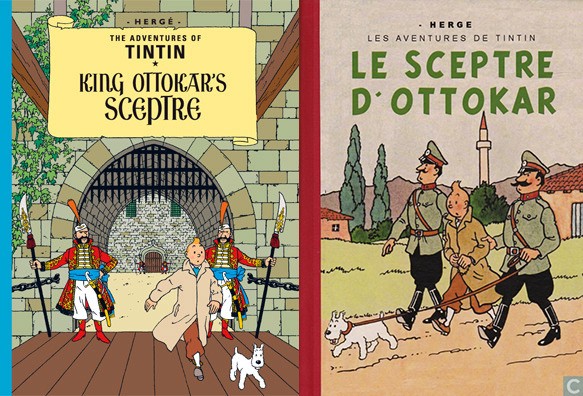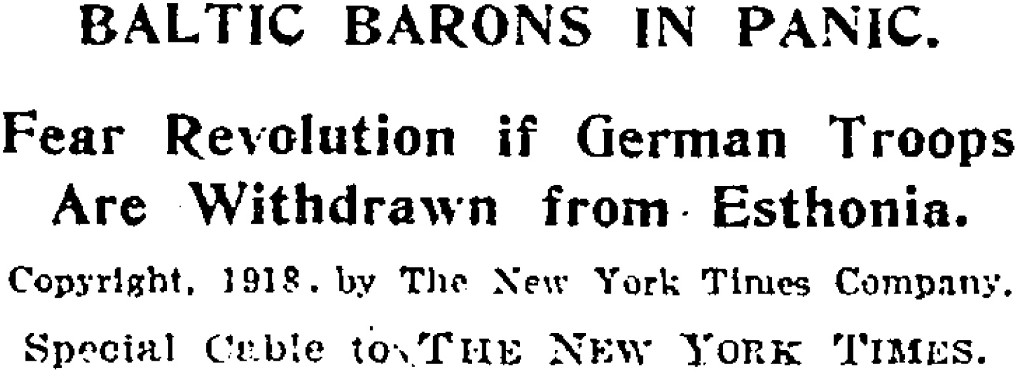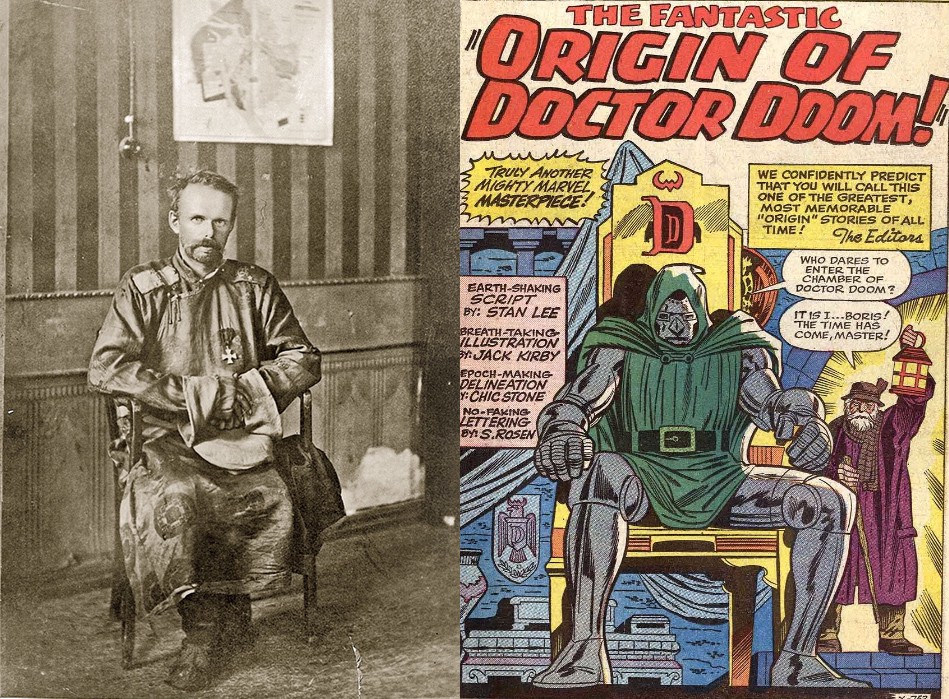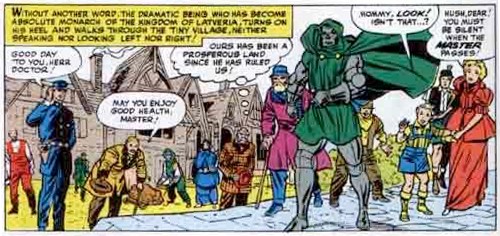The Forever-Doomed Eastern Europe of Our Imaginations
by Harry Merritt

Comic book films that can’t manage find convincing motivations for their protagonists can often be rescued by matching the heroes against a compelling villain — Loki alone has saved at least two Marvel movies now. But the latest Fantastic Four, which is so spectacularly awful that it’s the first movie to self-reflexively call into question the entire set of structures that have produced The Age of the Comic Book Blockbuster, abandons any possibility of making even Dr. Doom frightening or interesting. In a departure from the comic books, the actor playing the Fantastic Four’s nemesis announced last year that his origins would be rewritten as a Russian hacker named Victor Domashev — stripping Dr. Doom of what makes him a captivating villain.
Dr. Doom represented a new kind of supervillain when Stan Lee and Jack Kirby created him in 1962. Where earlier mad scientist types often possessed limited capabilities and ambitions circumscribed by their name — Calendar Man, Clock King, and Weather Wizard — Dr. Doom was endowed with a brilliant intellect, empowered by an armored suit, and armed with the resources of a small country as the ruler of the European kingdom of Latveria.

Where, exactly, is Latveria? According to Fantastic Four Annual #2, it’s an “isolated kingdom,” which, depending on the panel you at look at, is either located in the Balkans or nestled in “the heart of the Bavarian Alps.” And, though it seems to borrow its name from the real nation of Latvia, Latveria’s mixture of various geographic and cultural features place it in imaginary Eastern Europe, which has a long history in comics — Hergé’s Syldavia, DC’s Kasnia, and, more recently, The Avengers: Age of Ultron’s Sokovia could all share borders with Latveria.
One common element in many versions of imaginary Eastern Europe, including Dr. Doom’s Latveria, is the presence of a German aristocracy. Nowhere did it wield greater power in Eastern Europe than in modern-day Latvia and Estonia, which had been conquered by German crusaders in the thirteenth century. In the centuries that followed — though the lands changed hands between Denmark, Poland, Sweden, and Russia — this Baltic German aristocracy maintained effective control over local affairs. By the turn of the twentieth century, these “Baltic Barons” — a subject of fascination for American journalists — had distinguished themselves repeatedly as loyal generals, scientists, and administrators for the Russian Tsar. But when revolution arrived in Russia in 1905 and 1917, the special position of this elite came under existential threat.

Comic book readers might find Dr. Doom’s army of castle-dwelling robots to be silly, but this synthesis of medievalism and modernism wouldn’t be overly weird in the Baltic region. Facing Bolshevik revolutionaries on the one hand and Latvian and Estonian national activists on the other, the Baltic Barons recruited veteran soldiers from Germany that imagined themselves as medieval crusaders. These soldiers fought in units called
Freikorps, referencing defunct eighteenth-century Prussian military formations. In a fictionalized account of his time with the Freikorps, titled The Outlaws, Ernst von Salomon describes his fellow fighters as “outcasts from the world of bourgeois norms” and “mercenary foot soldiers” (Landsknechte). These men marched past ancient castles carrying flags featuring the Bundschuh (a symbol of Protestant Reformation peasant revolutionaries) and the symbols of the Hansa (a medieval Germanic Baltic Sea trading league), yet went into battle with modern rifles and machine guns, accompanied by armored cars and aircraft.

The Baltic Barons also give us the closest real world analog to Dr. Doom — Roman Nikolai Maximilian von Ungern-Sternberg. Growing up in present-day Estonia, Ungern-Sternberg followed a path taken by many of his kin and entered the Imperial Russian Army. After fighting on various fronts during World War I, Ungern-Sternberg found himself in the tiny garrison town of Dauria, east of Lake Baikal and near the borders of Manchuria and Mongolia, when revolution broke out. Combining a personal brutality with fervent anti-communism and a staunch belief in monarchism and state power, Ungern-Sternberg led his forces into battle against Bolshevik troops in Siberia, then pivoted south into Mongolia.
In February 1921, Ungern-Sternberg captured the Mongolian capital of Urga (today Ulaanbaatar) from the Chinese army and was proclaimed the reincarnation of Ghengis Khan by the Bogda, the spiritual leader of Tibetan Buddhism in Mongolia. Much like Victor von Doom first assumed the identity of Dr. Doom after being clothed in his armor by Himalayan monks, Ungern-Sternberg abandoned his army uniform for a modified version of the Mongolian
deel as he transitioned from military commander to warlord. From his new base in Urga, Ungern-Sternberg dreamed of the restoration of the Qing and Romanov dynasties in China and Russia, respectively.

Ungern-Sternberg’s megalomania and harsh meting of punishment was coupled with unexpected sympathy and understanding for populations traditionally looked down upon by the European elite. Though Ungern-Sternberg was a dedicated anti-Semite, he sought to understand and eventually adopted Buddhist religious ideas and Mongolian cultural traditions. Similarly, Dr. Doom was a patron and protector of Latveria’s Roma, who have long been an “unwanted people” in both real and imaginary Eastern Europe. But when Ungern-Sternberg launched an ill-advised offensive into Siberia in summer 1921, he did not live to fight another day; betrayed by his subordinates and captured by the Red Army, he was tried and executed.
During and immediately following World War II, Eastern Europe’s multi-ethnic, multi-religious, and multi-linguistic borderlands were transformed beyond recognition through population exchange, genocide, and state repression. But even after the Baltic Barons faded from history, other potential avenues for imaginary depictions of Eastern Europe emerged. In a story based on Nazi Germany’s annexation of Austria, Tintin helped save Syldavia from being taken over by its fascist neighbor Borduria in the 1939 comic King Ottokar’s Sceptre; when he returned to Borduria in 1954’s The Calculus Affair, it was depicted as a communist dictatorship ruled by a leader resembling Joseph Stalin.
Once the Cold War began, comic books had more reasons than ever to use Eastern Europe — real and imaginary alike — as a setting. Not only did the Fantastic Four and other Marvel Comics heroes do battle with Soviet-sponsored villains from the sixties onward, but the Fantastic Four’s origins exist in a Cold War context as well. The space flight in which the Fantastic Four gained their superpowers was made hastily, so that “the commies [don’t] beat us to it.” Later, as parts of Eastern Europe fell into ethnic conflict in the nineties, these developments were reflected in the Superman and Batman animated series of that era, with fictional countries such as Kasnia standing in for Milošević’s Yugoslavia.
The collapse of the Eastern Bloc and growth of the European Union have served to further alter the boundaries of Eastern Europe. When Latvians in the nineties flew to Berlin, Paris, or London, many would say that they were travelling “to Europe.” By contrast, today they generally feel themselves to be European. Specifically, Latvians today identify as northern Europeans rather than Eastern Europeans. Other nations have seceded from Eastern Europe as well. Estonia? A Nordic country. Poland? Located in Central Europe.
But Eastern Europe was never truly about geography. In Inventing Eastern Europe*, Larry Wolff argues that Eastern Europe is a concept created in Western Europe during the Enlightenment in order to delineate the boundaries of the civilized world. Eastern Europe, which could neither be considered fully part of the enlightened West nor of the barbarous Orient, served as a liminal space, one both familiar and strange. Whether under absolute monarchies, fascist dictatorships, or communist regimes, Eastern Europe could maintain an exotic quality in the eyes of West Europeans or North Americans.

Thinking back to Fantastic Four’s “reboot” of Dr. Doom’s as a disgruntled Russian hacker — which was largely rescinded in the final cut, restoring Doom’s name and place of origin — such an overhaul makes sense as Eastern Europe’s borders have continually been pushed further eastward, to Russia. Unlike its western neighbors, Russia is still presented as a strange and alien place — recall coverage of the Sochi Olympics, when reporters gleefully shared details of their brushes with Russian backwardness — yet one that we can quickly come to understand because of its simple and unchanging nature.
Given Russia’s resurgent appeal as a source of villainy and setting for intrigue, it may seem striking that Avengers: Age of Ultron returned to a fictional Eastern European nation. But the film’s setting of Sokovia was likely chosen for another reason: Sokovia’s capital served as a backdrop for the film’s climactic battle, leading to its destruction. After the devastation The Avengers visited on Manhattan — and the criticism Man of Steel received for its reckless disregard of fake human life in its cataclysmic final battle in Metropolis — a fictional, quasi-exotic location allowed Ultron to elicit the high stakes excitement of urban annihilation with almost none of the guilt that typically follows when a movie traffics, implicitly or otherwise, in the visual language of disaster established by 9/11
.
The failure of comic book films to build engaging backdrops out of imaginary geography is first and foremost a problem of translation. Despite their lack of multimillion dollar budgets and legions of CGI animators, comic books have long managed to immerse their audiences in fanciful locations that somehow also feel real. But even compared with the half of the film spent in dimly lit compounds, the planet in another dimension visited by characters in Fantastic Four felt dreary and monotonous. The great lengths to which today’s filmmakers behind comic book films go to make their movies gritty and realistic have instead only created worlds that are duller versions of our own.
If Fantastic Four acts as a wakeup call for studios to stop demanding that comic book films be ever more serious, then future filmmakers will hopefully consider returning to the roots of the genre. Rather than insisting that every comic book movie be set in our present-day world, filmmakers can embrace imaginary locations like Latveria, which function as essentially timeless places with vast possibilities for plot and character development.
*Correction: This piece originally mis-titled Larry Wolff’s book. We regret the error.
